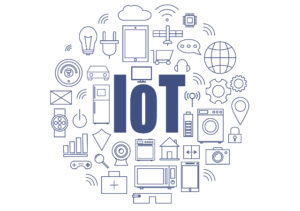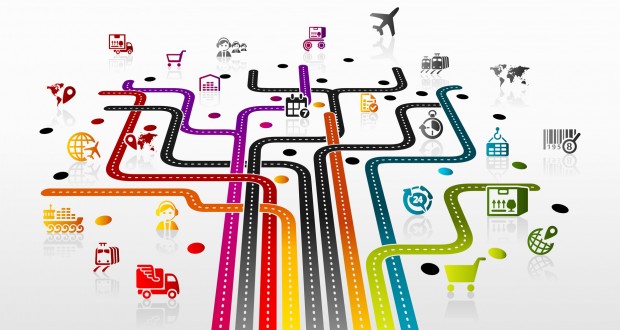
Internet of things and Augmented Reality
In previous articles, we have shown the benefits of using Augmented Reality and how it will grow in 2018.
But did you ever think about the enormous opportunities that would result from combining the AR with other disruptive technologies like the internet of things?
Internet of Things (IoT in short) and AR help people in their educational-informative, decisional and operative activities, by providing all types of information whose content varies according to the kind of object, person, moment, place and activity the respondent is engaged with.

But what is the Internet of Things?
Internet of Things is an expression that dates back to few years ago used to define a network of devices and items, other than computers, connected to internet. Some examples are cars, fitness devices, radio, air-conditioning installations, but also pieces of furniture, appliances, light bulbs, video cameras, containers.
In other words, any electronic device equipped with a software that enables it to exchange information with other connected objects.
The purpose of these connection between objects is, in general, to ease and speed up people’s life by automatizing all procedures or gather new kind of informations that before were not available.
Some examples?
A smart road able to communicate between cars, the traffic light and street signals with the aim to optimize traffic fluxes, reduce pollution levels and the travel time.
Smart thermostat able to learn times and people’s preferences and select the ideal temperature for every moment. Thanks to these devices, it is possible to save 20% of the energy. Moreover, thermostats can be command from remote through the smartphone, such as turning on the air conditioning or the hitter a little before be back home.
And these are only few of the many applications of the Internet of Things. Another one is provided when joint with augmented reality.
In one hand, AR connects the physical world with the digital contents. Indeed, the recipient with AR can interact directly with the objects activating the digital contents associated with it, allowing to receive better information according to the type of action he/she is engaged in. This is possible thanks to the overlay principle, that is a system which recognizes and activates a new layer of communication whose end is to be perfectly integrated with the real surroundings and add details on the object in question.
On the other hand, IoT objects are intelligent, autonomous and can provide proactive information that accelerates its flux and reception.
As a consequence, the two combined permit to entirely connect the physical and digital world, providing new opportunities and incentives.
Nevertheless, words cannot express the full potential and possible applications of this combination of technologies. That is why, as always, we will provide you few examples.

Recently, it has been thought to apply the IoT on vineyard cultivations. In particular, it has been proposed to create a central system that controls all the phases of the cultivation cycle and the life of the winemaking. This will allow to manage the vineyards at the best and and reduce the use of agro drugs.
Image to be able to monitor everything that happens in the vine rows (even if the vineyards are located in different places) and inside the wine cellar during all phases of the winemaking process, all this possible by just implementing IoT technologies. How?
It could be created a wireless network of sensors connected between each other that gather a considerable amount of data and then sent to a web platform, whose purpose will be to elaborate those data and provide technical information, alarms and advices for the installations management and the winemaking operation.
Such application was not only thought, but it was discussed last 7th June in a dedicated seminar that took place during the Nova Agricoltura in Vigneto, which resulted having a discrete success.
What about the augmented reality?
In this field, AR can help to improve the brand of the winemakers, allowing the consumers to easily follow all production phases from their houses.
It is sufficient to place some sensors between the vine rows which will gather data into a cloud and, after being elaborated by a software, they will provide information on the characteristics of the wine.
Additionally, the data gathered can also provide other fundamental information necessary to optimize the grape cultivation, like regarding irrigation, fertilization and plant treatments adopted to fight climate challenges.